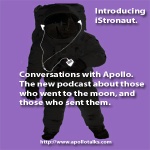John Saxon OAM
BA
– Before Apollo
Apollo
AA
– After Apollo (actually after 30 years with NASA).
John receives his OAM from the Governor-General of Australia, Her Excellency the Honourable Ms Sam Mostyn AC, at Government House in Canberra on Tuesday 6th May 2025. |
Asked about his favourite
mission, John writes –
|
“Personally I have always
picked Apollo 8 with 15 a close second. Why 8?
1. An incredibly gutsy decision
to go beyond the 850 mile altitude record – everything had to work!
2. Selfishly, it was the first
time that the 85 ft antennae would assume the role that they had been built
to do, and we had been preparing for 2 plus years.
3. Due to a combination of
celestial mechanics and luck, we at HSK had the ‘lion’s share’
of that mission. There was always competition between the sites to be the ‘prime’
site for major mission events.
4. At HSK we saw the first
lunar pass including the first time that an Apollo spacecraft came out from
occultation from behind the moon (spot on time – indicating that the LOI
burn was good).
5. Actually I was about 5 seconds away from being the first person to talk to someone in lunar orbit! We had configured redundant voice equipment (meant for the LM) to be used in the event that the spacecraft might be in a backup voice mode. Somehow there was confusion about the mode, and the man at the demodulators was frantically trying to find the correct source, while I (equally frantically) tried to select the correct intercom channel to remote to Houston. I can still hear the ‘Voice of Apollo’ PAO commentary saying “we have data but no voice yet”...
My fingers hovered over the
local voice uplink buttons, ready to reassure the crew that we were sorting
things out. But we persisted for a few more seconds and then the crew were able
to talk to Houston normally. There – our dirty washing is now out there
for all to see!
6. I believe we were also
the prime site for the final orbit and Acquisition of signal after the critical
TEI burn – another tense moment.
7. But most of all –
even though most of us missed a lot of Christmas with our families, most of
us (religious or not), would not have missed Frank Borman’s reading from
Genesis. Probably one of the best moments of all the missions – including
A-13.
But 15 was a close second – major increases in complexity with the extra CSM experiments and the weird Rover voice and data configurations + the first time the TV was 1/2 way decent. It was great to see Ed Fendell really hammering up the real time commands. Pan left... Pan left... Tilt up.... Zoom in... Zoom in.... Iris open.... etc.
A couple of years before we
had built a local simulation system to emulate that (took the NASA aircraft
simulation teams by surprise – we could checkout what they were doing up
there in the Super Constellation via the TV system). So it was good to see the
‘real thing’ happening over a rather longer distance.”
John spoke with the Apollo 16 crew (John Young and Charlie Duke) in the LM on the lunar surface during a comms outage with Houston.
Hear the conversation on this page in the Apollo 16 section.
The Space Show – 11th November 2003 with Mike Dinn and John Saxon. Listen in Windows Media Player format (about 18Mb) – about 80 minutes.
 |
In August 2007, John was interviewed by James DeRuvo for Conversations
with Apollo.
John’s interview is available here, courtesy of James DeRuvo.
(It’s a 47MB mp3 file, and runs for 51 minutes.)
|
John at Earl’s
Court in London, about 1955. |